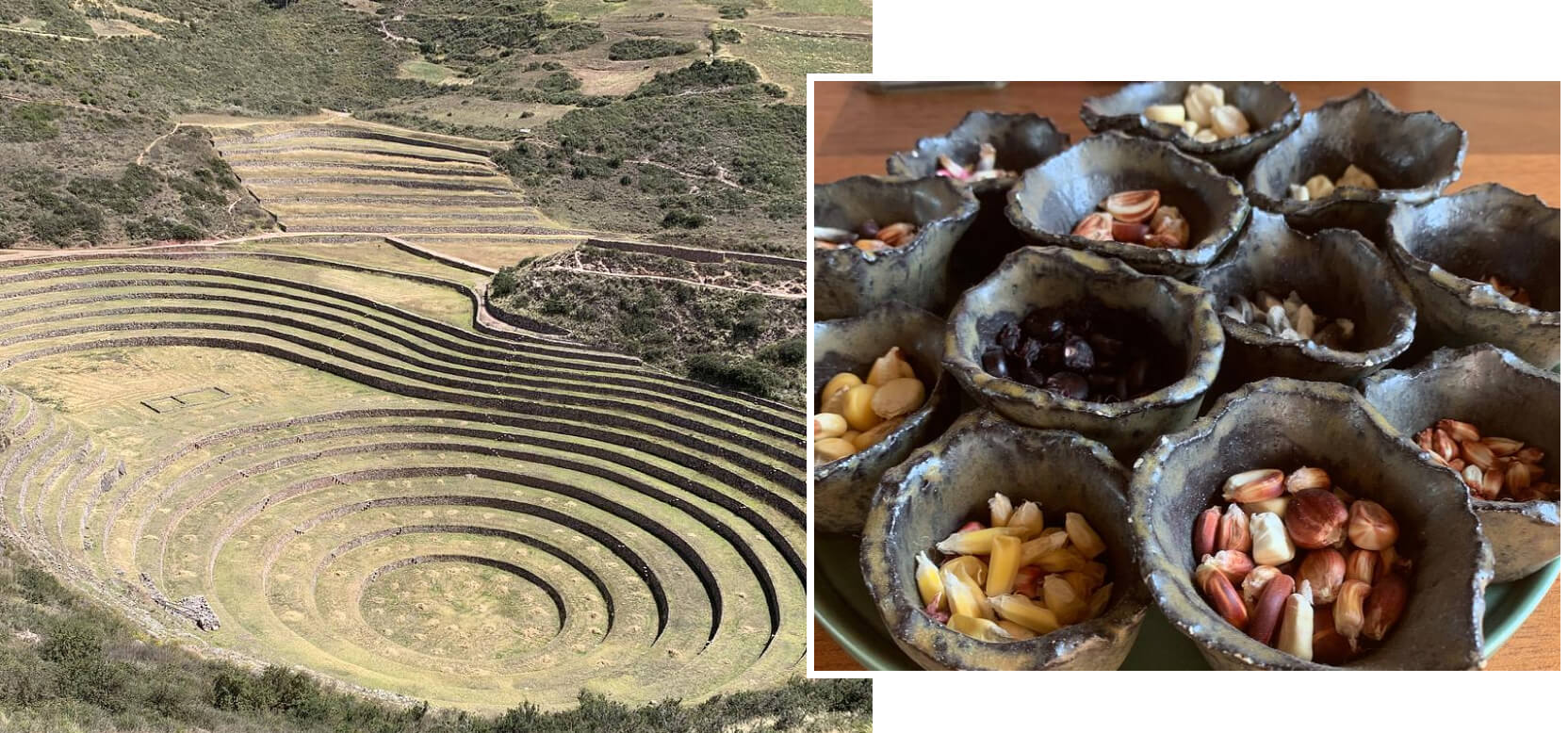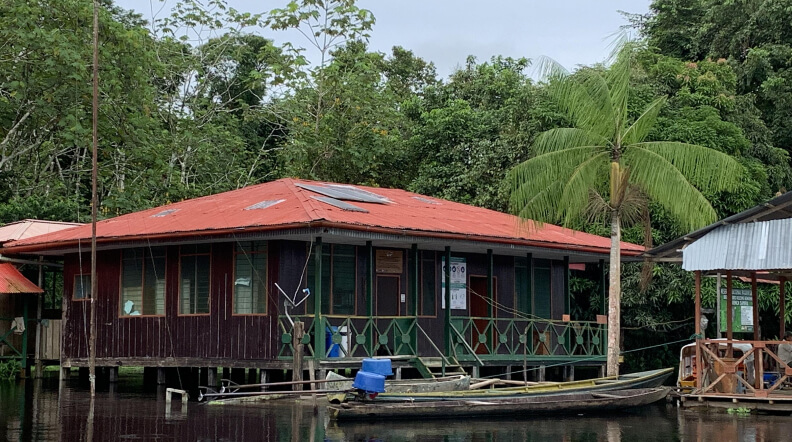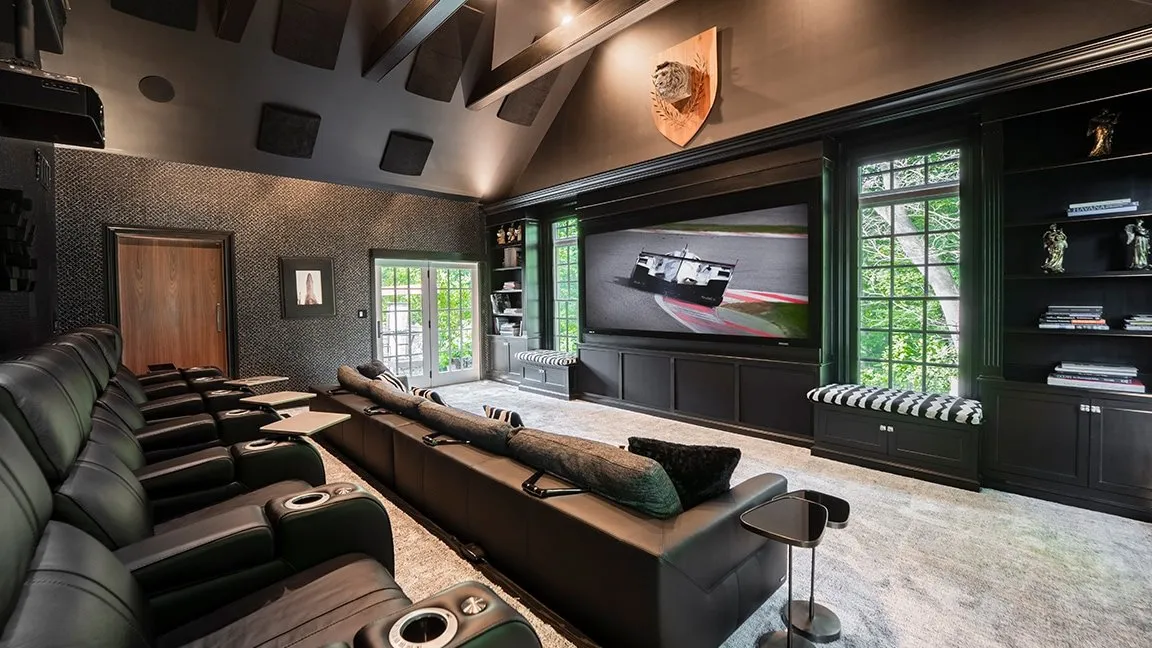A 14-Day Peru Itinerary ist die Überschrift der Nachrichten, die der Autor von NachrichtenStar diesen Artikel gesammelt hat. Bleiben Sie auf NachrichtenStar auf dem Laufenden, um die neuesten Nachrichten zu diesem Thema zu erhalten. Wir bitten Sie, uns in sozialen Netzwerken zu folgen.
A 14-Day Peru Itinerary
Written by: Ricky Strauss
|
Published on: September 8, 2022
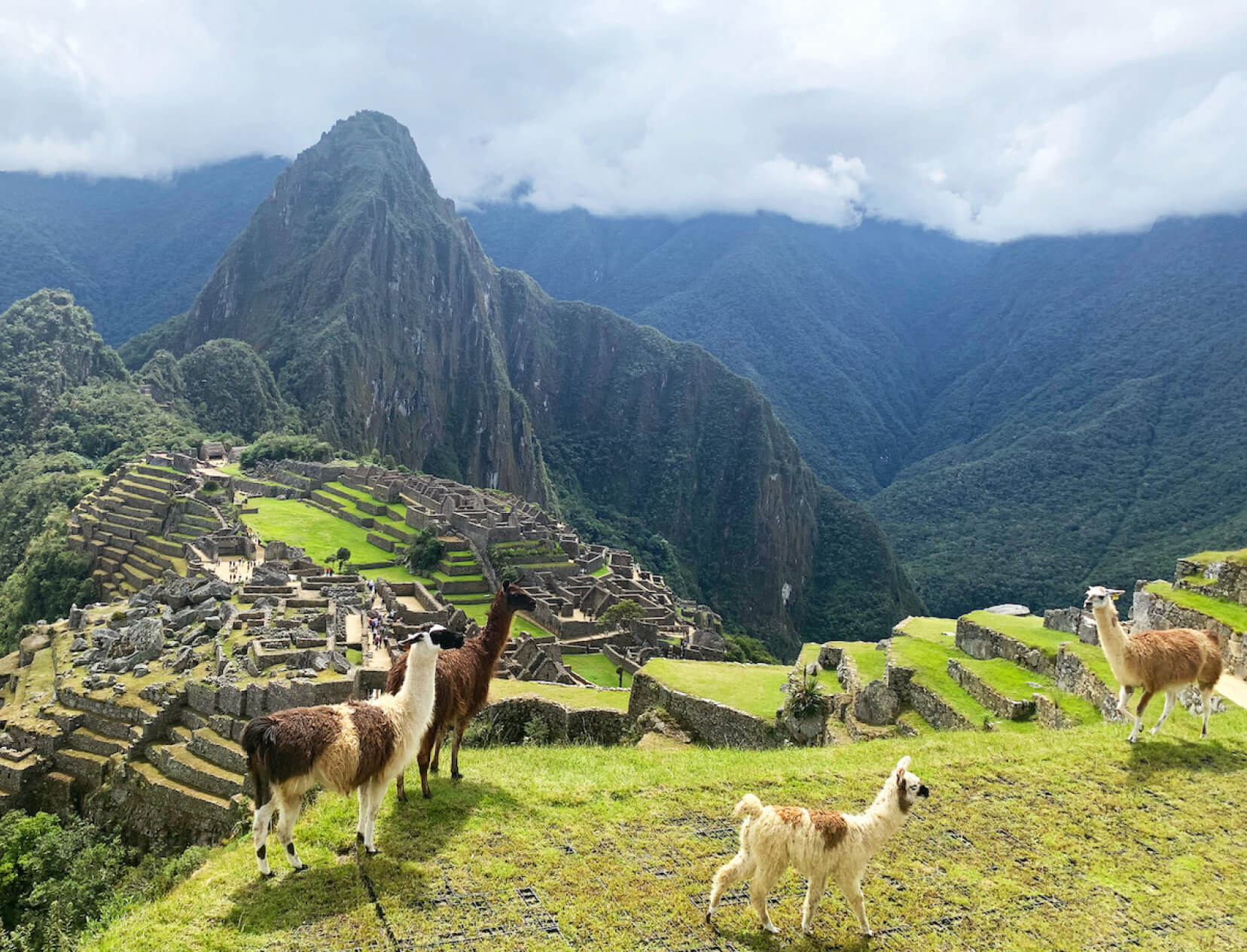
“Piranhas do not eat human flesh. That idea came from Hollywood,” our guide Marcos told us as we crossed the Amazon River in our small skiff to hunt for anacondas along the shoreline.
On our first day in the jungle, the air was moist and the sun was high. I was with my friends Patrick and Jordan—we’d all wanted to travel to Peru for a long time. And while the star attraction was the celebrated citadel of Machu Picchu, we were also keen to visit the Amazon and experience the serpentine network of tributaries that wind through the Peruvian jungle.
Our travel agent worked with the outfitter Almaz Journeys to help plan our adventure. It was the perfect itinerary: In 14 days, we traversed the fascinating country, soaking up the spectacular Incan history, eating marvelous pan-continental cuisine, and drinking many a pisco sour along the way. And we felt so welcomed by the Peruvians we met.
Days 1–3: Lima
We began our journey by flying directly to Lima from Los Angeles on LATAM Airlines on an easy overnight flight.
Upon our arrival in Lima at 6:30 a.m., our friendly English-speaking driver took us to Barranco, a vibrant neighborhood known for its art.
We had an early check-in at Hotel B, a luxury seaside boutique hotel housed in a former colonial mansion. Vestiges of its earlier days include tiled floors, high ceilings, and transom windows to capture the crosscurrent of ocean breezes. There’s a popular restaurant and rooftop bar on the property, and the room rate covers a bountiful buffet breakfast. (You can also order à la carte dishes off a menu that highlights the local cuisine.) While Hotel B is located at a somewhat busy intersection, the windows are double-paned, and its intimate décor provided a comfortable respite for our short two days in the city.
Lima is a sprawling metropolis, and its western districts are located along the shores of the Pacific Ocean. But unlike the Atlantic coast of South America, these waters are frigid and not a place you’ll find sunbaked revelers humming bossa nova hits and splashing in the surf. The city’s historic center is where you’ll find the grand 17th- and 18th-century colonial architecture it’s famous for: The Spanish conquistadores—who ravaged most of the country, destroying centuries-old cultures and forcefully converting Indigenous people to Catholicism—created grand European-style squares and churches that rival those found in their homeland. There are two grand plazas here—one that allows protests and rallies (Plaza San Martín) and another that does not (Plaza Mayor). Plaza Mayor was closed to tourists at the time of our visit.
Two of the world’s best restaurants are located in Lima. But if you’re constrained by budget or lack the lead time to secure a reservation at Central or Maido (both extraordinary), there are many lesser-known spots that highlight what makes Peruvian cuisine so special. In the elegant Miraflores district, there is a restaurant called La Mar that serves local seafood and specialty cocktails with distinctive Peruvian fruit juices.
Days 3–7: Iquitos
After a lovely two days exploring Lima, we flew up to Iquitos, a remote port town on the shores of the Amazon. Iquitos is reachable from Lima solely by boat or plane, as there are very few roads in the jungle. There’s a paved roadway that connects Iquitos to Nauta, another small river town on the shores of the Amazon. The journey from Iquitos to Nauta by car is two hours, versus a three-day boat ride due to the winding nature of the river.
I got a taste of the most coveted jungle fruits sold in the markets: aguaje (from local palm trees), camu camu (which contains more vitamin C than an orange), and maracuya (a spicy passion fruit).
Our home on the Amazon was the stunning Aqua Nera, a riverboat constructed to glide along the rushing river and explore its more serene “blackwater” rivers, the smaller branches of river that derive their name from the decaying leaves of vegetation that leach tannins into the water. Despite the name, the water is very clear. According to our guide, the alkaline nature of the water makes it good for the skin and keeps you looking youthful and fresh.
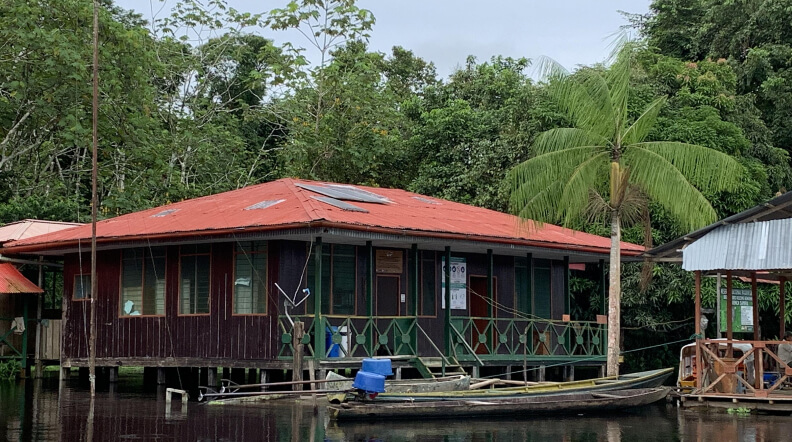
There are diverse species along the shoreline, including elusive pink river dolphins and not-so-elusive schools of fish. It took some time to understand that the river isn’t a deadly soup of poisonous creatures; upon our arrival, you couldn’t have gotten me to jump in for all the camu camu in the world. But after being educated over the next few days, we all enjoyed a refreshing splash. (I admit this was before our nature hike on dry land, where I saw some tiny poisonous frogs and a tarantula as big as a grapefruit.)
Aqua Nera has 20 guest suites. A beautiful main gathering space on the top deck has floor-to-ceiling windows, a fully stocked bar, and an outdoor deck with a swimming pool and chaise longues. There’s a mini screening room and a game room with a billiard table. The dining room is intimate and elegant—breakfast is a daily buffet, while lunches and dinners are served family-style at your table. This is where we first experienced a local delicacy called paiche: an enormous river fish with a delicate texture and a rich, buttery taste.
The light along the Amazon changes with the passing of clouds and sun. It is not uncommon for a quick torrential rainstorm to be immediately followed by a rainbow and then brilliant warm sunshine. We were warned about mosquitoes, and any outdoor adventure had us lathering on repellent, which helped tremendously. I emerged unscathed, without so much as a bite. Each morning and each afternoon, our incredible guides took us out on small electric-powered skiffs to explore various parts of the river. Our activities included fishing for piranhas, bird-watching (there are over 575 species of birds in the Peruvian Amazon), and keeping our eyes peeled for sloths, caimans, and the fearsome anacondas.
Alas, despite our pursuits, we did not catch a glimpse of the latter aquatic predator. But we certainly tried and had a grand time along the way meeting people and learning about their lives along the fabled river. In the evenings, back on the boat, we sipped delightful pisco sours (a simple concoction of lime or lemon juice, sugar, and pisco mixed with a single egg white and drizzled with Angostura bitters). The guides introduced us to machin, which is a potent local beverage distilled from various jungle roots. It packs a punch and tastes rather like cough syrup and Jägermeister.
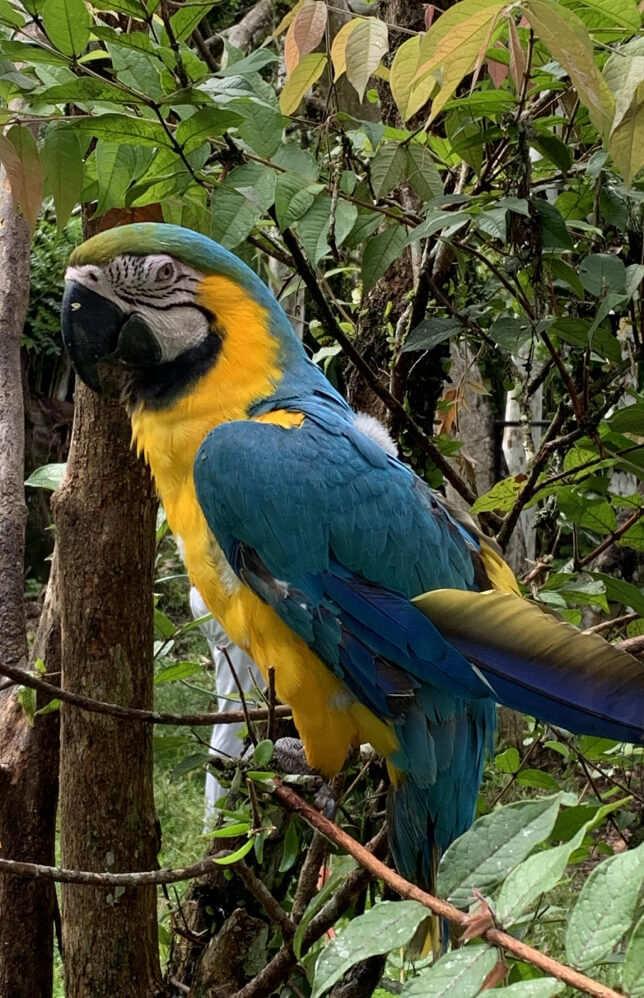
All the amenities aboard Aqua Nera, including the bedding, are luxurious. The staff is accommodating, friendly, and warm. After four nights on the ship, the guests begin to feel like a family, and there was a goodbye celebration on our last evening that felt like the end of summer camp. I couldn’t imagine a more intimate and special journey. We left Aqua Nera feeling educated, energized, and enlightened.
On the morning of our departure, the vans took us to a manatee rehabilitation reserve on our way back up the road toward Iquitos airport. Manatees at one point thrived in the river and ate the plentiful water lettuce that accumulates on the tops of the bogs, helping keep the natural environment in balance. But sadly, due to overfishing and poaching, these gentle creatures are at risk.
Days 7–10: Sacred Valley
From Iquitos, we flew back to Lima and then boarded another flight to Cuzco, the former capital city of the Incan Empire. It takes a bit of time to get used to the altitude, but most hotels have oxygen available for those who might need an extra boost. Our itinerary had us only passing through Cuzco, as we had plans to spend several days in the Sacred Valley, a fertile farmland in the Andean highlands that encompasses several important Incan sites, including Pisac and Ollantaytambo.
Our home here was Inkaterra Hacienda Urubamba, a sprawling property with individual casitas overlooking the spectacular mountain range and the valley floor below. Inkaterra is a hotel chain in Peru committed to sustainability—we stayed at several of its lodges during this leg of the trip. I particularly enjoyed the wood-burning stove in my casita and the private outdoor terrace for sipping coca tea in the morning and stargazing at night. Coca leaves have traditionally been brewed there to help with altitude adjustment. Some people recommend squishing the leaves together and letting them dissolve in your mouth to get a more immediate effect, but I didn’t find that necessary.
We met our guide Ramiro early the first day and traveled way up to Chinchero, a small town believed to be the mythical birthplace of the rainbow. We visited a women-run textile cooperative and learned about their weaving techniques, which have been practiced for hundreds of years.
After Chinchero, an adventure guide named Cesar took us on a mountain biking expedition through the Andean back roads into stunning country. Snow-capped mountains framed the distant horizon (“The glaciers are melting,” Cesar sighed). Local farmers with herds of sheep and grazing llamas shared the road.
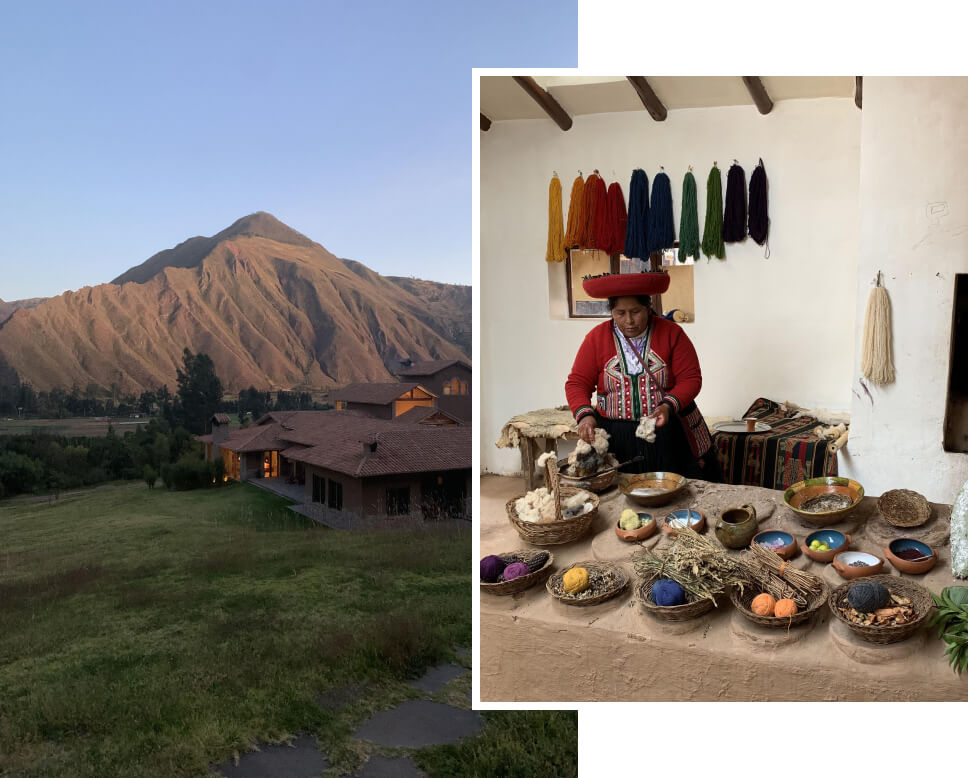
Soon we found ourselves at the entrance of Moray, an Incan archaeological site on a high plateau close to the impressive salt mines of Maras. We took long a walk along the terraced circular depressions once used to grow crops. It was a welcome respite after the bike ride—I’d had to stop several times while riding uphill (remember the altitude!)—and I used the opportunity to breathe in the crisp mountain air and catch my breath. (Putting the macho in Machu, I know.)
We were certainly ready for our three-hour, eight-course lunch at Mil, a culinary experience conceived by husband and wife Virgilio Martínez and Pía León of Central fame. The couple uses ingredients sourced from local surroundings, and it’s a breathtaking culinary journey. The food was phenomenal, and the presentation equally so. We elected to have the alcohol pairing, which really elevated the meal, with Peruvian liquors and drinks distilled and fermented in-house. The choreography of the meal was spectacular, and we left lunch close to 4 p.m. Suffice to say, no one ate dinner that evening, and I was more than content to rest in the room and get a good night’s sleep.
Our next day in the Sacred Valley began with a kayak exploration on the placid waters of Waypo Lake. Except for the ducks, we were the only ones out that morning exploring its mirrorlike surface. Following our kayak ride, we drove to a beautiful grove beside the Urubamba River, where we met a shaman, José, who helped guide us in an offering to Pachamama (Mother Earth in the Quechuan dialect).
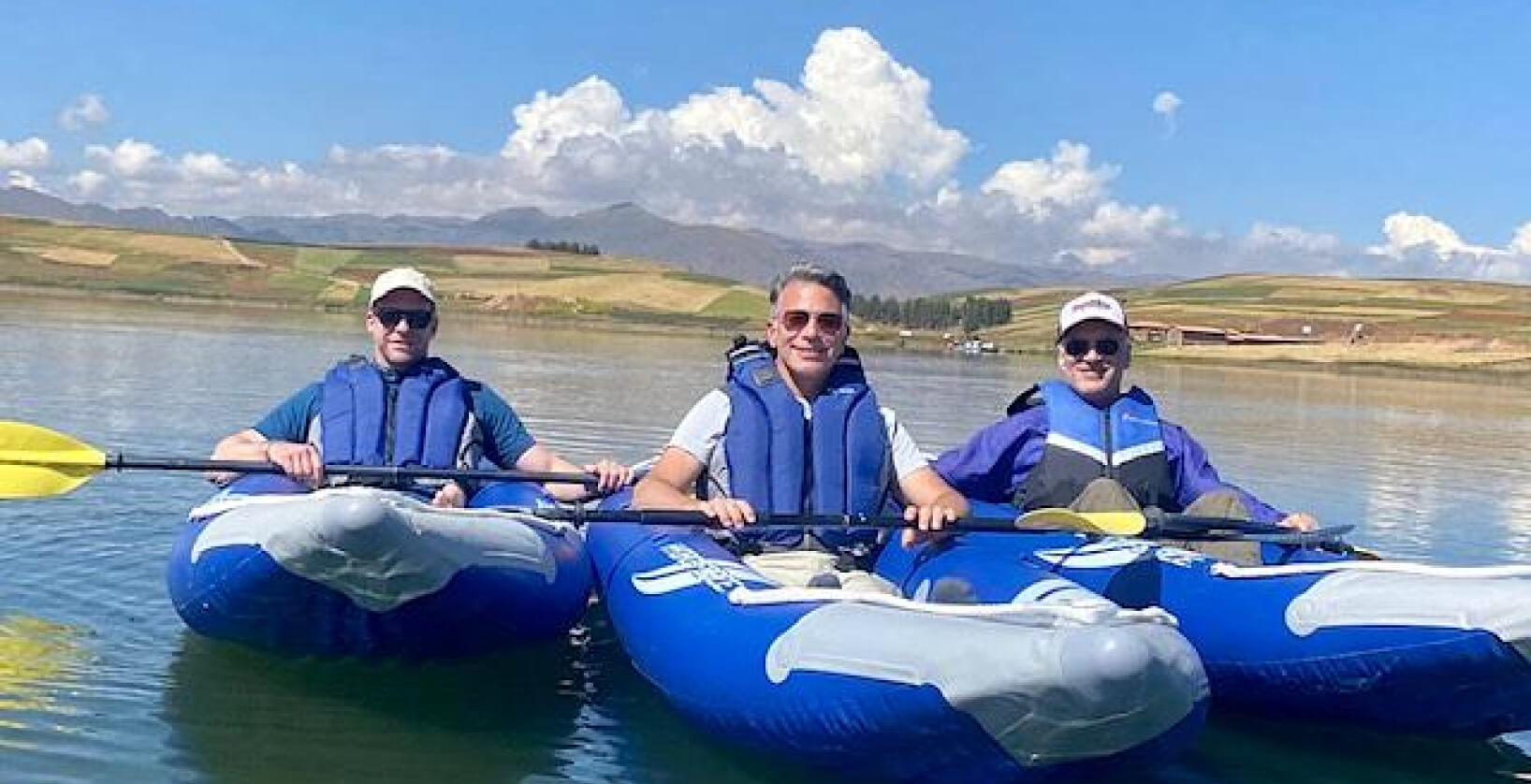
For our ritual that day, José prepared a number of offerings to Pachamama, including candy, savory foods, liquor, synthetic coins, and other treats that were wrapped in a small cloth and buried in the ground. We recited a blessing and made wishes. Afterward we had our futures read in the coca leaves. Lucky for us, we all received a reading with the promise of good health and prosperity. I asked Ramiro if the shaman always provided good news from the coca leaves. He said not always, but that the shaman offers wisdom to help soften the blow.
Soon we were toasting Pachamama and our shaman while eating a picnic of fresh vegetables and roast chicken, chased down with a cold Cusqueña beer.
The highlight of our trip to the Sacred Valley and our starting point for Machu Picchu was our visit to Ollantaytambo, a village known for its ruins encompassing a massive stone fortress. Once the royal estate for the Incan emperor Pachacuti, it’s a marvel of Incan stone engineering.
In town, there’s a train station that connects you to Aguas Calientes, the town (and tourist hub) at the entry point to Machu Picchu. We had dinner at El Albergue, an inn and restaurant right off the tracks. On the train to Aguas Calientes, which hugs the Urubamba River, we watched the landscape change from drier mountainous terrain into a verdant jungle. The views are spectacular—try to go while the sun is still up.
Days 10–11: Machu Picchu
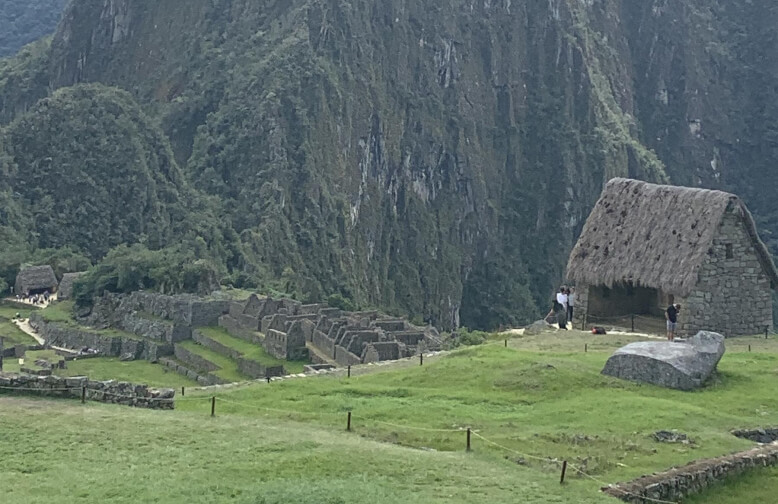
It’s a good idea to spend the night in Aguas Calientes before trekking or driving up to the citadel in the morning. Inkaterra has a lovely hotel here: Built on a former tea and coffee plantation, it’s made up of 83 whitewashed adobe casitas nestled in the cloud forest. My junior suite had a wood-burning fireplace and a small deck overlooking the rushing Vilcanota River, which feeds into the Urubamba below. I sipped pisco sours fireside at the bar as we met with our guide Rodrigo to plan for the next day’s excursion to Machu Picchu.
There are several ways to reach the entrance point to Machu Picchu. The well-traveled Inca Trail, which begins at kilometer 82 (halfway between Ollantaytambo and Aguas Calientes), includes a four-day trek through mountainous terrain, with elevation reaching 13,000 feet. We chose to take the faster route by riding one of the ticketed passenger vans up the steep mountain road (although I understand why the former option might be on your bucket list).
Machu Picchu is magnificent. No amount of planning or anticipation can prepare you for how magical it is. To walk among the ancient Incan ruins and learn about life in this sacred city, while gazing at the towering mountain peaks and majestic vistas, is a once-in-a-lifetime experience.
Still buzzing, we made our way to lunch at the Belmond Sanctuary Lodge, an exclusive hotel outside the gates of Machu Picchu. The Belmond is the only place to stay at the top of the mountain, and it comes with a corresponding price tag. If you want to be the first in line to the site in the early morning, this is the spot for you. And, for what it’s worth, the food was great.
After lunch, we drove back to Aguas Calientes, and we caught ourselves in the labyrinth of souvenir stalls. The tour guides joke that even sweaters advertised as “baby alpaca” are probably “maybe alpaca.”
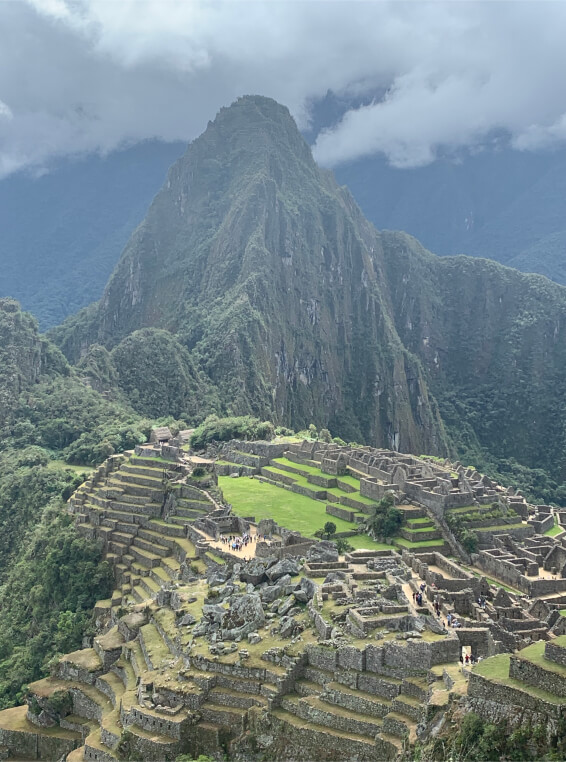
Days 11–14: Cuzco (and back to Lima)
We soon boarded the Belmond Hiram Bingham, a luxury train that gets you to Cuzco. Expect a welcome drink at the station, 1920s-style cars with comfortable booths, elegant food (poached paiche with camu camu!), ever-present pisco sours, and live music.
Our trusted driver Victor picked us up from our stop in Cuzco and took us to the Inkaterra La Casona hotel for our last two nights in Peru.
While in Cuzco, a city included on the UNESCO World Heritage List, we saw more Incan sites. Cuzco was the seat of power for that mighty civilization. Impressive remnants include Sacsayhuaman, a citadel in the northern outskirts of the city (also built by the very industrious Emperor Pachacuti), and Qorikancha, arguably the most significant temple in the empire. I could never grow tired of trekking through all these ruins.
Cuzco also has incredible artisans and shops—naturally, I left with a hand-loomed poncho made from baby (maybe?) alpaca. Whichever it is, I was grateful for it on the chilly ride to the airport early the next morning.
We spent our last day in Peru back in Lima, touring antique shops and food markets, enjoying local delicacies like lucuma ice cream. Lucuma is a delicate-flavored fruit that tastes almost like butterscotch. It’s also an excellent vehicle for sugar and cream.
Our dinner that evening was at Maido. Chef Mitsuharu “Micha” Tsumara, who was born in Lima and studied in Japan, is a master of Nikkei food: Peruvian ingredients prepared with Japanese techniques. Whether you opt for the tasting menu or order à la carte, you’ll have the most incredible feast. We lingered at the table sipping digestive muña (mint) tea and trading stories about the trip.
You could visit Peru for the food alone—it’s that good. You could visit just to see Incan sites and hidden citadels. You could visit only to swim in the Amazon among the pink dolphins or trek the Andean highlands cloaked in soft alpaca.
And if you’re very lucky, you might spot an elusive anaconda, checking off a tourist-in-Peru bucket-list item for you, as it slithers down the shoreline. I didn’t—and I wouldn’t change a thing.
